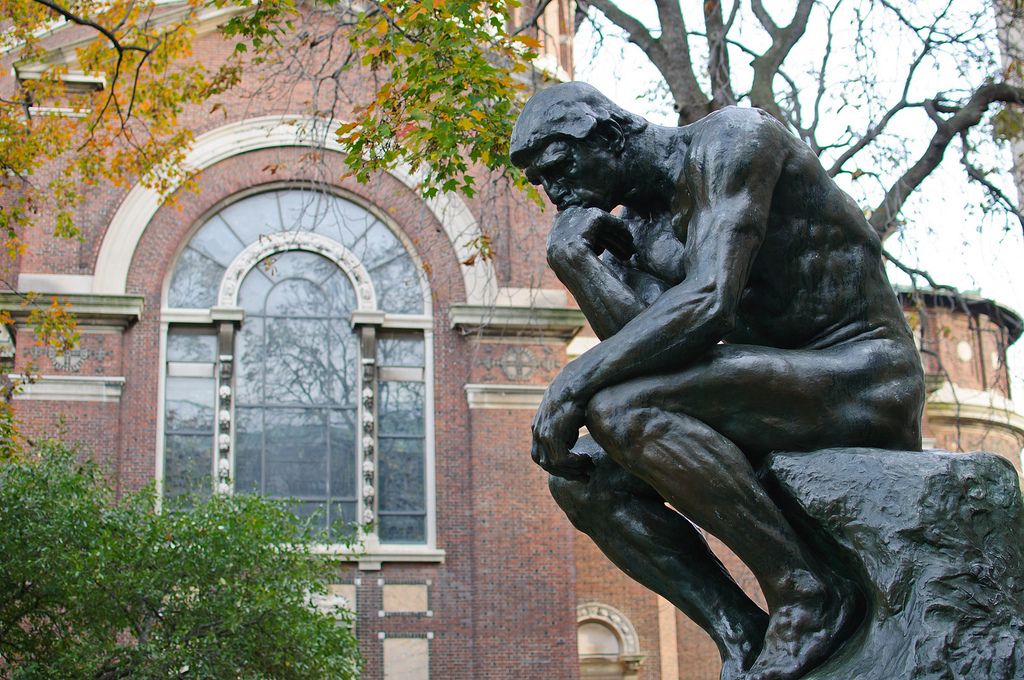Movement towards the global economy may not always be evident, especially as talk of Brexit and Donald Trump’s rallying supporters have dominated the news as of late.
Taha Bawa is the CEO of Goodwall, the social network for high school students to tell their stories, discover opportunities, win scholarships and get recognized by universities.
However, if you are young, chances are you support the idea of a global economy and the opportunity it brings for people to study and work abroad.
Brexit backlash revealed that a huge proportion of the UK’s youth are in support of EU membership, with 75% of 18-24 year olds voting to remain. However much Donald Trump or Nigel Farage protest, the youth of today want equal opportunities and free movement. 59% of millennials in the U.S. say they would move to another country for a job. For people going into college today, this means as a graduate you could well end up exploring work opportunities in another part of the world. And when businesses review your credentials a respected name is a big advantage. The 2015 Global Employability University Ranking put Harvard at the top, alongside notable Ivy League and redbrick schools, including Oxford, Cambridge, MIT and Stanford.
These prestigious colleges are no longer restricted to the rich or well-connected. The global economy draws students from across the world, each fighting for a highly coveted spot. But, you need to play the game.
Ivy League enrollment battles
As we have seen, a big name on your resume puts graduates ahead of the game when it comes to applying for jobs after school. Top schools also provide a network of alumni with lucrative possibilities for later job searches. As a result, aspiring undergraduates face big competition, and if you are considering the holy grail of an Ivy League education, you’re going to have to work harder than previous generations.
This fall, 23,129 new students will embark on their Ivy League college education. This is a 2% increase from last year’s admissions to these eight top universities; Brown, Columbia, Cornell, Dartmouth, Harvard, Pennsylvania, Princeton, and Yale. But as student faculty numbers slowly creep up, they are quickly outpaced by massive increase in overall applicants, up 14%, meaning an even greater number will be left disappointed.
This year, Harvard College reported a “record-breaking” 39,044 applications of hopefuls vying for spots in the Class of 2020. The Ivy League school’s Dean of Admissions attributed this increase to new recruitment campaigns, targeting students that previously may not have considered Harvard for their college education. As applicant figures for Ivy League schools surge this is driving all-time lows in admission rate. For Harvard this was also a record-breaking year, with just 5.2% of applicants accepted, equating to 2,037 new enrollments.
As these schools become more desirable to a growing number of academic hopefuls, this new competition is coming from across the globe. The Atlantic has reported a “globalization of America’s colleges,” recognizing the great power of a ‘“Made in the U.S.” stamp’ on a college diploma. The article reports a significant increase in international students on U.S. campuses, up 10% to around 1 million in the 2014-15 school year.
Read More: Why High School Students Need to Become Global Citizens
As increasing numbers of hopefuls opt for an Ivy League education, it has birthed a whole industry of college application services across the globe. In China, companies such as Taurus Education, tutor students in everything from SAT to personal essay brainstorming and writing coaching. Forbes reported that some families pay up to $60,000 for these premium services. But this isn’t the only option, a variety of online tools and extracurricular activities can also help to build your portfolio without breaking the bank.
Developing extracurricular acumen
Today, not only do you need to worry about scoring those top grades, you also need to think about what you do out of school. This could mean volunteering in your local soup kitchen, dusting off your old violin for high-school band time or hitting the track.
Princeton’s Dean of Admission, Janet Lavin Rapelye says that colleges “assess your extracurricular activities, how you have spent your summers, if you have had a job or were engaged in community service, what you may have done outside of school, and any other supporting material.”
“Students’ intellectual imagination, strength of character, and their ability to exercise good judgment — these are critical factors in the admissions process, and they are revealed not by test scores but by students’ activities outside the classroom,” said longtime Dean of Admission at Harvard College, William R. Fitzsimmons.
Extracurricular activities often focus on key areas such as voluntary work, arts, sports, extra study or student body leadership involvement. That said, a student that builds an F1 racing car in their spare time will be sure to grab attention. “What do you do when you come home from school?” says Assistant Director of Undergraduate Admissions for Dartmouth College. Accomplishment in extracurricular activities, impact in their school or community and external expectations such as family responsibilities are all a part of this. Commitments might range from summer jobs, online courses or personal interests that paint a vivid picture of the individual.
With University summer college enrichment programs dismissed by some as “sleep-away camps,” it can be hard to identify that something special that admissions officers want to see. So what out-of-school activities do schools value, and how can students get involved? The universal consensus among admissions is that your decision to take part in extracurricular pastimes should tie into a bigger story, and it should be a reflection of your true passions.
There is no one-size-fits-all resume, but the global economy of college applications and the digitization of this process all means there are online resources to help connect students with programs. For those looking to get a head start at Oxford University, there are on-site summer courses available in a range of subjects for students between the ages of 10-24 years.
Sites like Education First and World Endeavors provide language training, cultural exchanges through a combination of academic programs and travel programs. GeoVisions offers international opportunities via paid teaching placements.
If a local college doesn’t have the right courses to match your interests there are a large number of online education sites, for example Khan Academy, Coursera, edX and a number of open source university courses online helping students to take learning into their own hands. This also means students don’t need to invest heavily on study fees, leveling the playing field for less financially privileged individuals and their families.
The digitization of the student portfolio
Online channels not only connect students with potential activities to suit their tastes, the digital world also provides a way for applicants to tell their stories.
“Every student should have a digital portfolio,” claims Getting Smart CEO Tom Vander Ark. This collection of accolades and experiences is a clever way for students to exhibit their continued development. Many schools support this through advisory programs centered around online tools. Your online resume could be via a blog on Medium, an interactive presentation on Prezi, or even using Google Drive or Evernote. These systems are available for students, encouraged by high schools and increasingly becoming a part of the college enrollment procedure.
Read More: Bringing Silicon Valley into Schools: How to Make Students Entrepreneurs of Their Own Education
Eighty universities — including every Ivy League college — across the U.S. have adopted online application and portfolio application Common Application. Use of the new platform encourages students to start thinking about their higher education aspirations, from a younger age, cultivating an online resume of student experiences and accomplishments.
Formation of the group “Coalition for Access, Affordability and Success”, aims to connect high school students, offering tools to create their digital portfolios and a new application system that can be tailored for different colleges.
On top of providing a canvas for student academic and extracurricular tales, online tools can also help to connect students with funding or scholarship opportunities. Take, NAIA preferred mobile recruiting app LemonAid, a tinder for coaches and student athletes helping to match sports players with schools. This tool also makes use of new policy allowing greater online communication in the recruitment process.
Mobile app Schoold lets students search for and plan college applications, mapping a journey, prioritizing favorite schools, providing financial support through scholarship and loan information and even exploring potential career opportunities.
For this cohort, social media and digital communications is becoming second nature. According to the GlobalWebIndex, the average 16-24 year old uses nine different social networking accounts. This tech savvy attitude opens doors for improved transparency and support when it comes to college applications.
The internet has democratized a great number of industries and it can do the same for college hopefuls. New free tools that cut through the complexities of college applications can provide support for the young. By exploring online extracurricular activities and promoting student achievements and communications, digital tools can replace expensive premium services. This provides new opportunities for students from a range of backgrounds, with a variety of skills and experiences. And it can help them to bag a spot at the best school for them, promoting greater diversity at top tier schools in the global college economy.











